
MyersBriggs Type Indicator (MBTI)
You use Sensing (S) and Intuition (N) to receive and process new information either by using your five senses or in more abstract ways. Sensing and Intuition are opposite preferences. A person's natural tendency toward one will be stronger than the other. There are by far more Sensing people in the population than Intuitives.
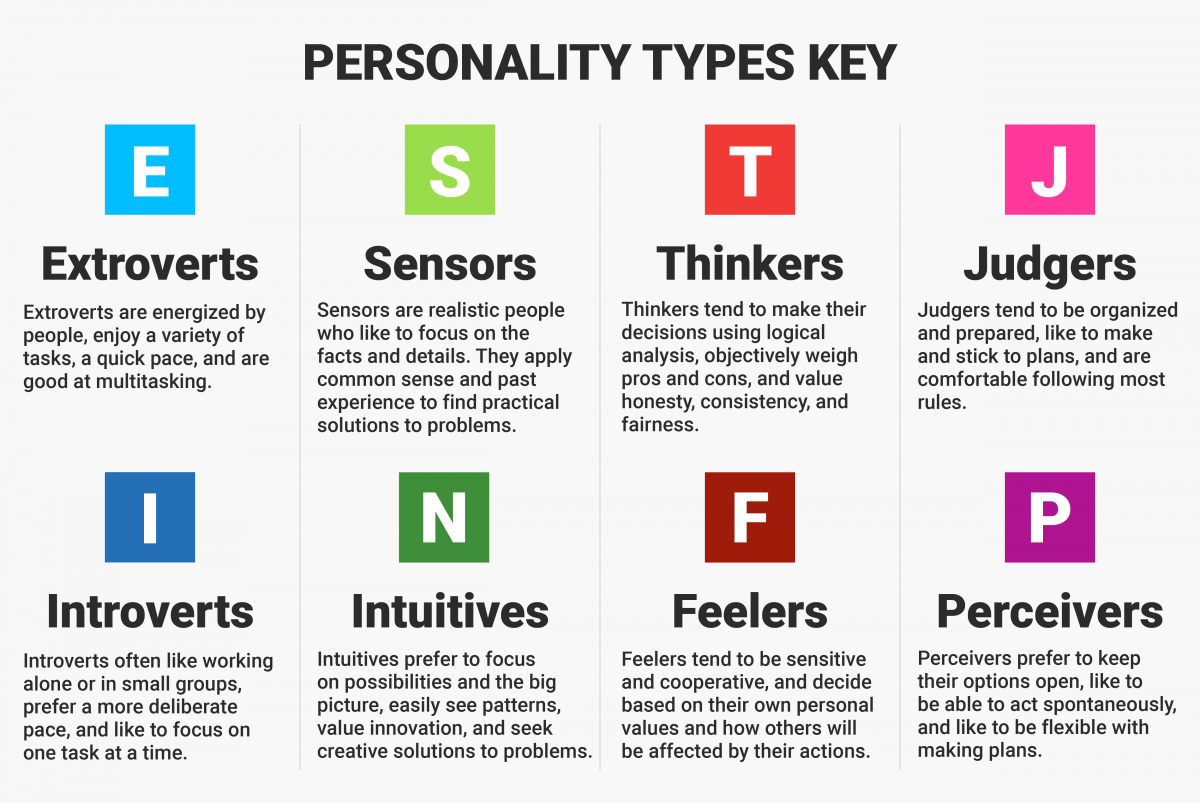
MBTI Myers Briggs Type Indicator Shockingly Different Leadership
Myers-Briggs Intuition (N) vs. Sensing (S) SHARE THIS PAGE: 64 Shares. About A.J. Drenth. A.J. is a four-time author and recognized authority on personality typology. He founded Personality Junkie® in 2009 which has since grown to see over 3 million annual visitors. His work has been referenced in numerous publications and he currently boasts.

Pin by Kaye Smith on Personality types Personality types chart, Briggs personality test
A Deep Dive Into Intuitives & Sensors in the Myers-Briggs Type Indicator Download Article Figure out whether you're sensing or intuitive in this guide Co-authored by Kari Samuels and Devin McSween Last Updated: September 18, 2023 Fact Checked Sensing (S) | Intuitive (N) | Overview | Interacting with Each Other | Advice for Sensors |

MyersBriggs Type Indicator (MBTI) Overview LEADx
S is more interested in practical things (new or not), N is more interested in new things (practical or not). There's overlap, of course, in things that are both new and practical.
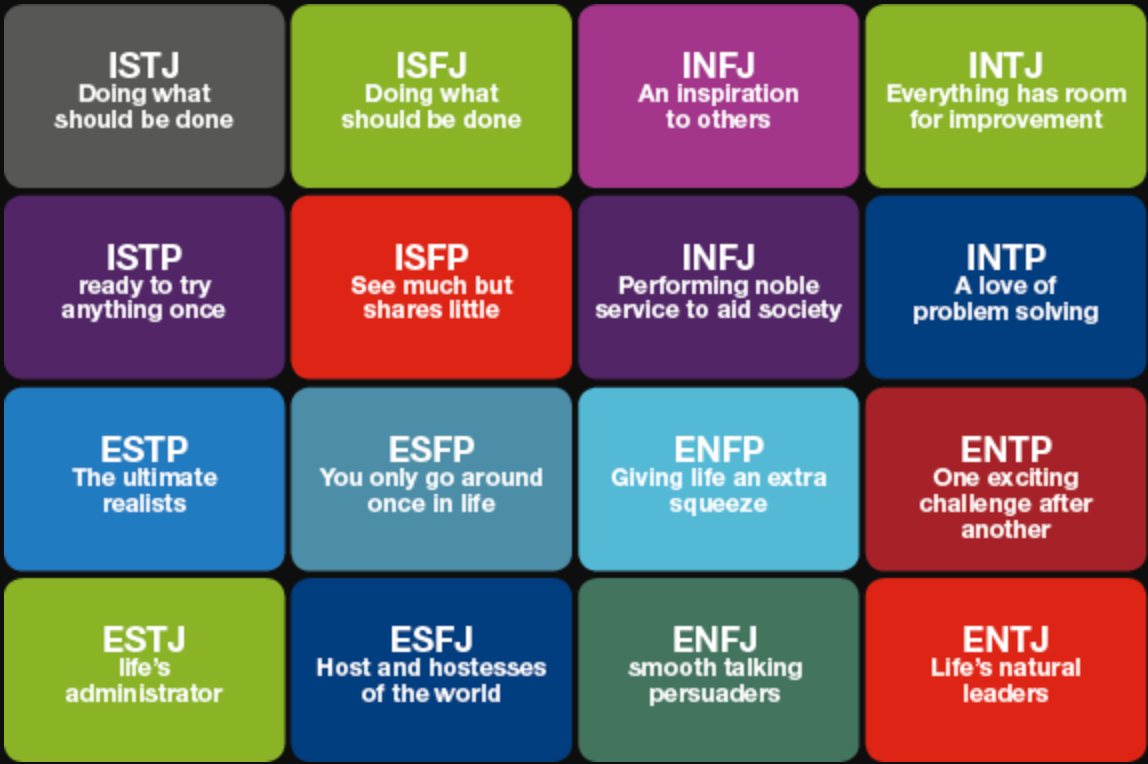
MeyersBriggs Classification Models by Alex S Analytics Vidhya Medium
Myers-Briggs and Jungian Cognitive Functions . Introducing S vs. N. Thread starter Blackwater; Start. I've bolded what particularly fits me in the S and N descriptions and italicized what sort of fits, depending on the circumstances. S: Concrete Realistic Prize enjoyment Aware of current trends

The MyersBriggs helps us understand different personality types ENTJA Life verses, Myers
Let's dive into four key comparisons. 1. The 9 vs 16 type system To categorize and describe different personalities, both the Myers and Briggs system and Enneagram use 'types' or categories. Myers and Briggs has 16 possible personality types, resulting from four opposing personality functions, also called dichotomies, preferences or scales.

How the MyersBriggs Type Indicator Works 16 Personality Types
In Myers & Briggs' personality typing, the Sensing/Intuition dichotomy describes how a person takes in information, whether through sensory-based experiences or by intuitively recognizing factual patterns and connections. Find your type
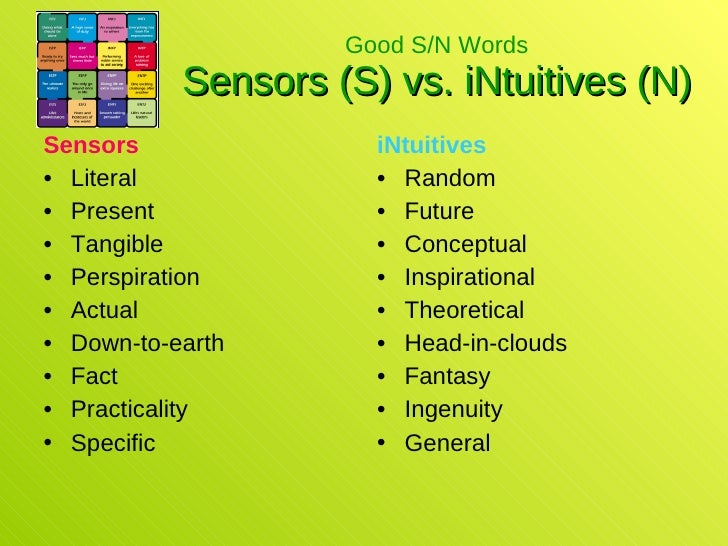
MyersBriggs Basic Presentation
Explaining the differences between Intuition and Sensing in the 16 Myers-Briggs Personality Types. These are the signs of intuition vs sensing. If you want t.

Sensing vs. Intuition Judging vs perceiving, Personality psychology, Intuitive vs sensing
The S vs. N dimension indicates how one identifies, interprets and relates to data, which in turn can influence transition behavior. Sensors tend to be detail-oriented and linear, valuing facts and historical precedents. Intuitors are more likely to interact with data in a less-structured way, often thinking about the future more creatively and.
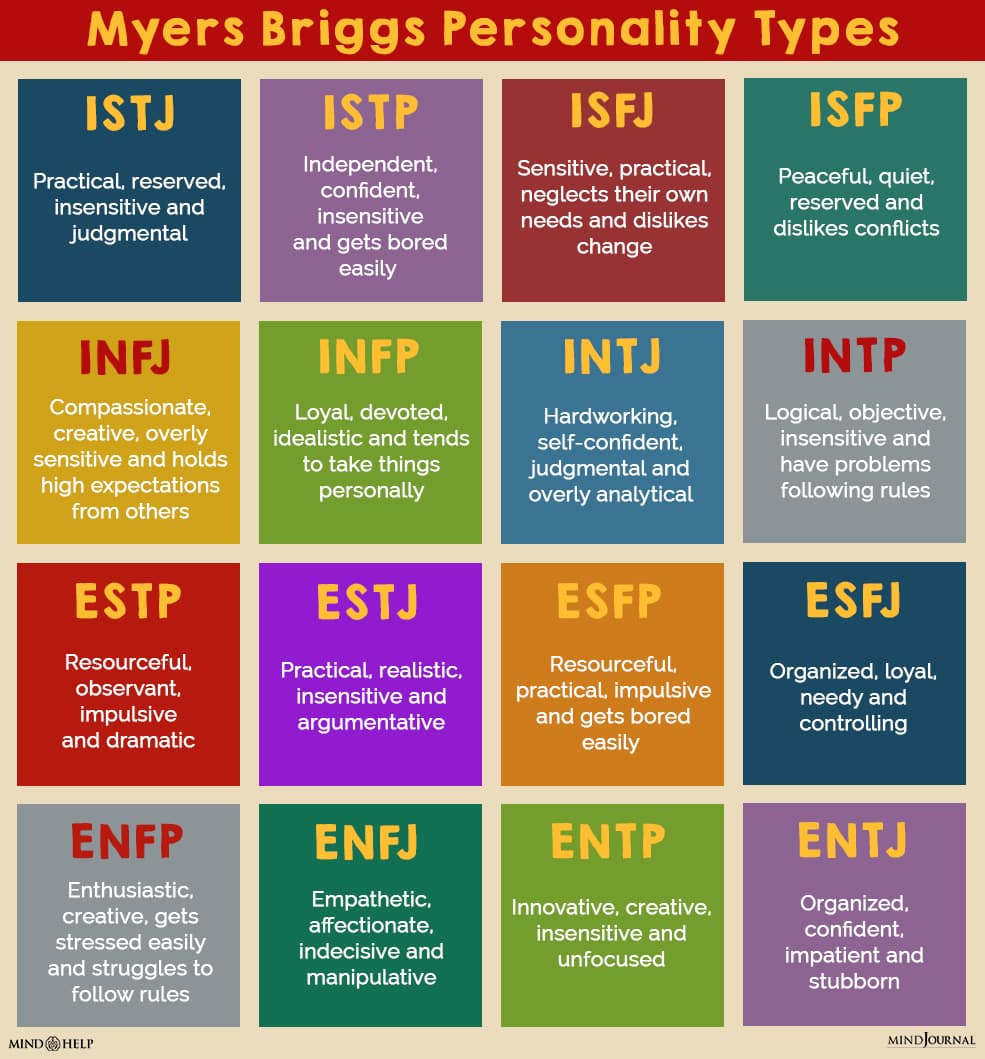
MyersBriggs
The Myers-Briggs Personality Type Indicator is a self-report inventory designed to identify a person's personality type, strengths, and preferences. The questionnaire was developed by Isabel Myers and her mother Katherine Briggs based on their work with Carl Jung's theory of personality types.
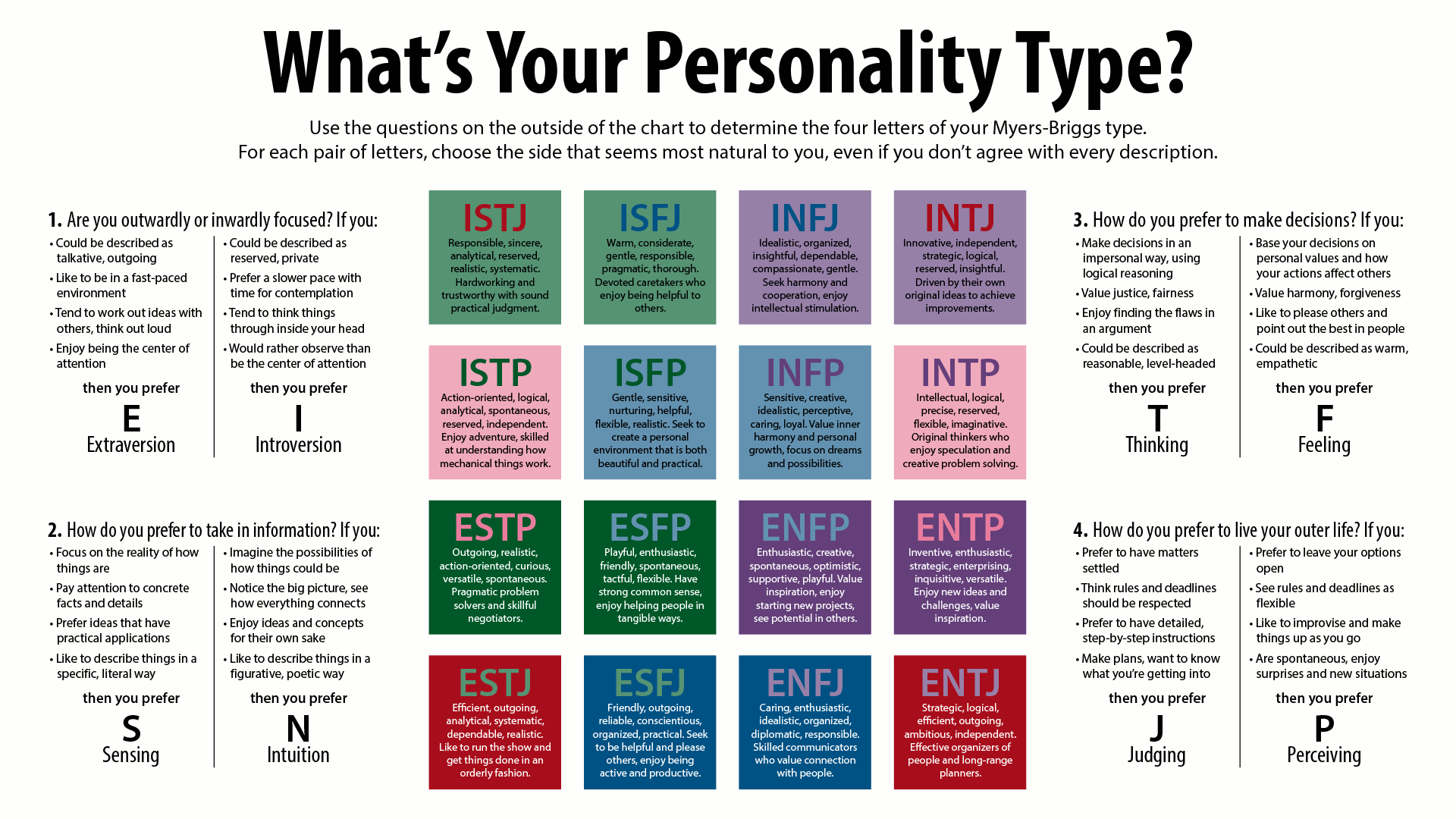
FileMyersBriggsTypes.png Wikipedia
Myers-Briggs The 16 MBTI system and is the key to understanding type. Learn about process pairs and an overview of how type dynamics works. model is developmental. Discover the pathway for type development over the lifespan. assessment for helping you choose a career and manage career changes at every life stage.
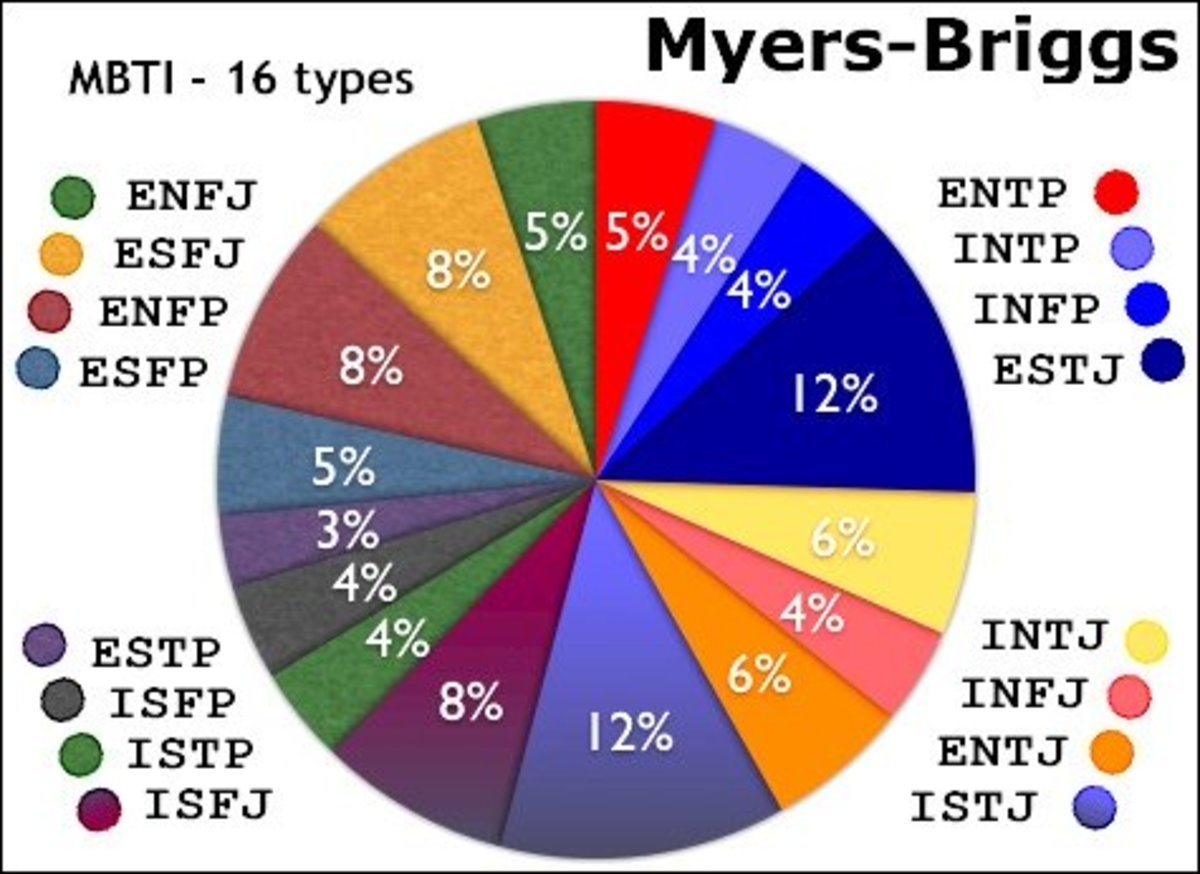
The History and Significance of the MyersBriggs Personality Test Owlcation
October 3, 2023 Reviewed by Saul Mcleod, PhD On This Page: The Four Dichotomies The 16 Personality Types Benefits of MBTI Criticisms of MBTI The Myers-Briggs Type Indicator (MBTI) is an introspective, self-report evaluation that identifies a person's personality type and psychological preferences.

MBTI explained Personality types chart, Myers briggs personality types, Personality chart
Though there are many examples of S and N type personalities on the internet (where there are many debates on what is right or wrong) the general purpose is that in terms of the work you do, you enjoy processing information differently than your peers. One of my favorite examples is my partner-in-crime at Isagenix.

Perbedaan S Dan N Mbti Chart IMAGESEE
Core Theory Mind: Intuitive (N) vs. Observant (S) Thought at Every Scale Our second personality scale includes the Intuitive (N) and Observant (S) styles. These traits describe what people are more likely to do with the information gathered from the world around them.
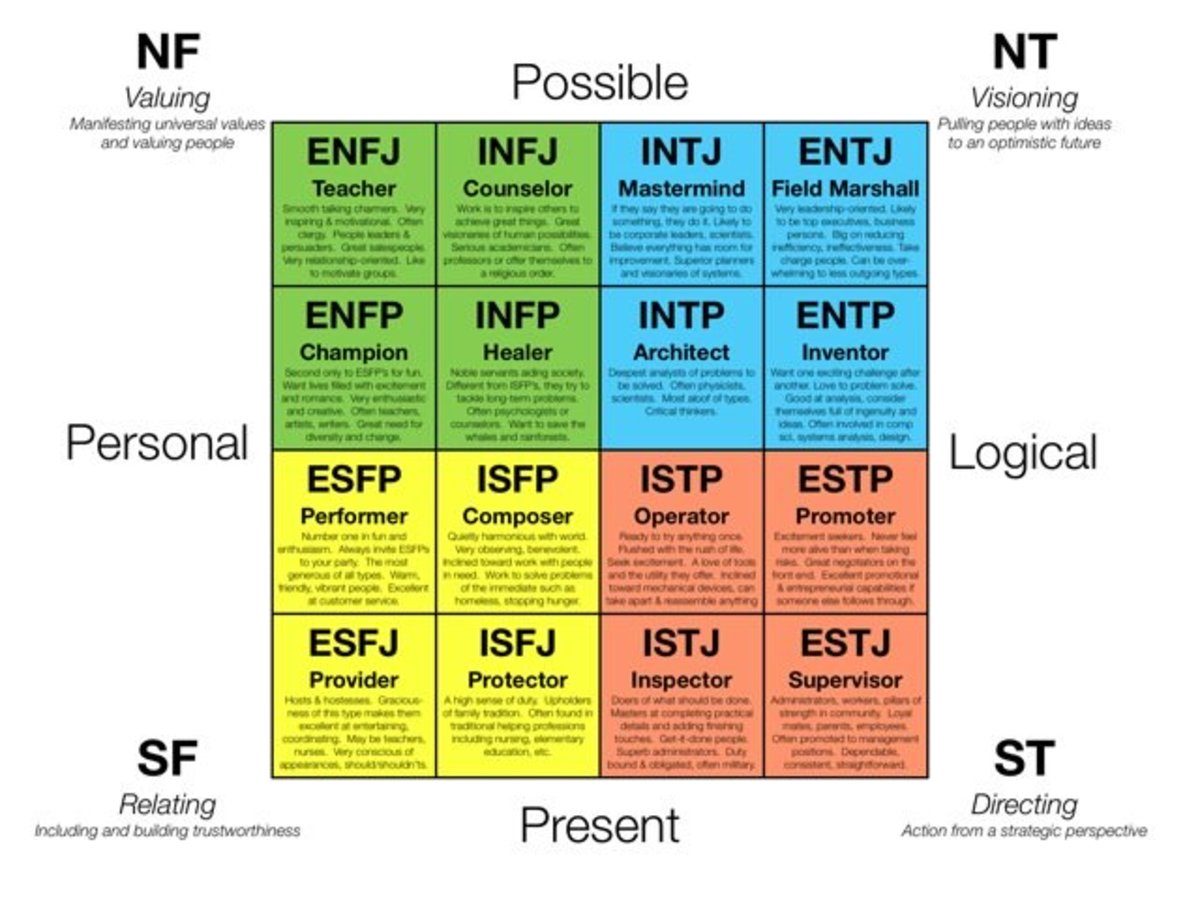
History and Significance of the MyersBriggs Personality Test Owlcation
In the Myers-Briggs® system, Sensors have an "S" as the second letter of their type code (for example: E S FJ) while Intuitives have an "N" as the second letter of their type code (E N FJ).

S vs. N How Does Your MBTI Preference Influence Your Transition? Leader OnBoarding
Created by renowned psychiatrist Carl Jung and popularized since the 1940s, the Myers-Briggs Type Indicator (MBTI) uses tailored questions to find your combination of four sets of opposing traits: introverted versus extroverted; sensing versus intuitive; thinking versus feeling; and perceiving versus judging.